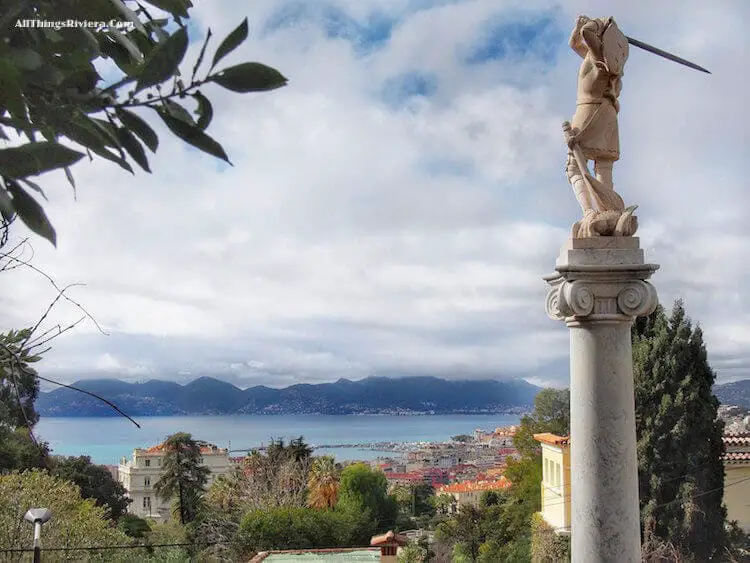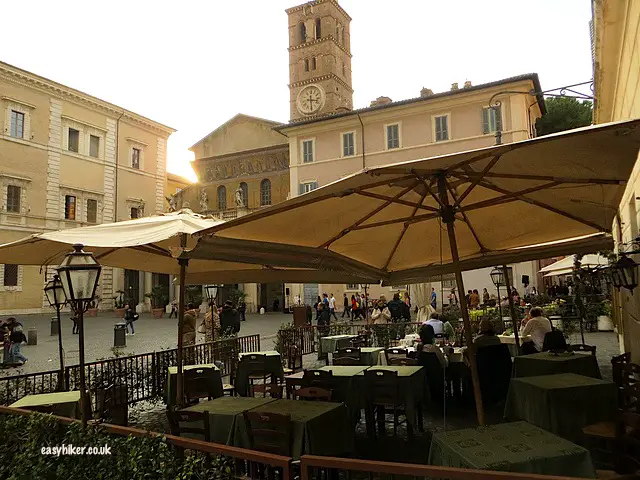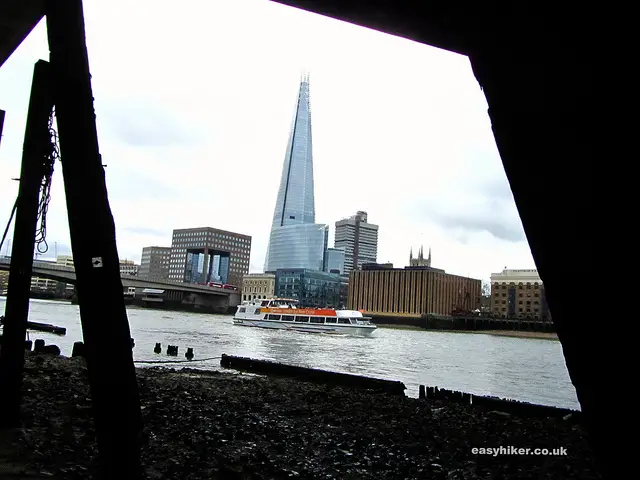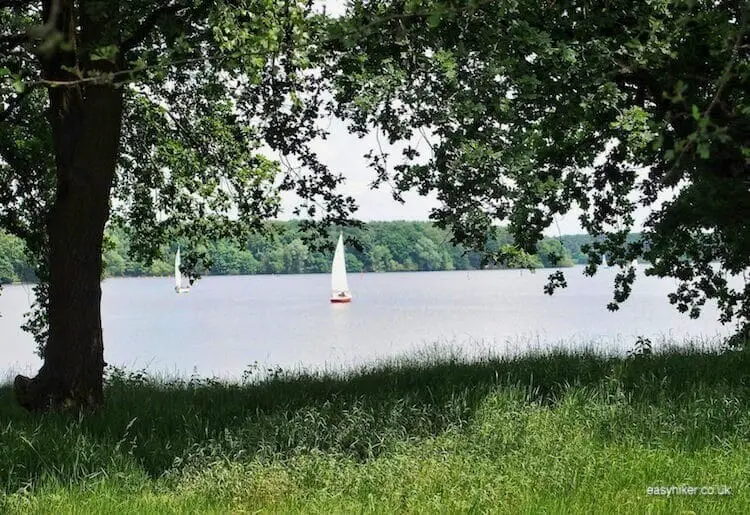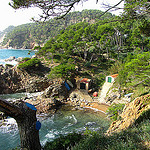This week and next, we shall go on two classic Edinburgh walks, both of which offer you a unique experience. The first one resembles a Robert Burns poem: unpolished and a bit rough, full of drama and life, while the second is flowing and melodious like a Sir Walter Scott novel, featuring great set pieces but also – admittedly – a few longueurs along its winding path.
We start this week with the occasionally rugged half-day trip to hilly Edinburgh’s highest peak, called Arthur’s Seat, …

… the 250-metre-high volcanic rock that sits above the Scottish capital.
It is not, however, located “in the town centre”, as you may read in some posts and brochures, and separated from Edinburgh’s main streets by a distance of approx. 4 km and a not particularly scenic walk.
When you decide to go climbing up Arthur’s Seat, we therefore suggest you preserve your energies and take bus no. 14 from the stop at the very top of Lothian Street (near the corner with Princes Street) to Royal Commonwealth Pool.
Walk back about 100 metres and turn into Holyrood Park Road on your right in the direction of Holyrood Park.

At the gates of the park (which also houses the Scottish Parliament), you will be welcomed by a view of the Salisbury Crags, once a Mecca for Scottish rock climbers. (Recently their activities have been seriously curtailed, mainly out of environmental concerns.)
If you have the time to allocate a full day to your trip, you should visit these Crags after your climb of Arthur’s Seat and take a walk on their cliffs.
These offer some magnificent panoramic views of Edinburgh, something of which you only get a foretaste when passing both the Salisbury Crags and the city centre from afar.

On to climbing up Arthur’s Seat
At any rate: you have to turn right in the direction of Arthur’s Seat first (if you do not want to scale the cliffs, this is the shortest way of accessing the Crags), where you will soon encounter the first appearance of one of the hike’s major themes …

… which is steps: a stone stairway, only briefly interrupted by a few flatter stretches, will take you nearly all the way up.
The steps, however, are not always as neat and regular as they appear here: further up, they are generally far more rough-hewn, and the route can be quite steep in places.

There are, however, also gentler, more lyrical passages …
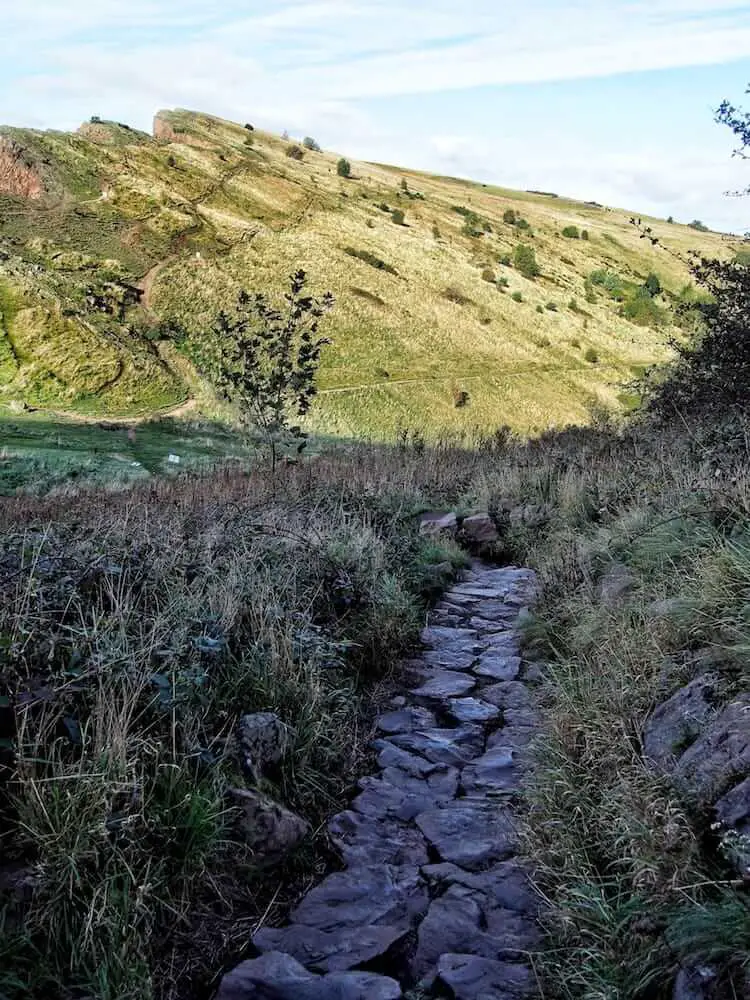
…and places where you can pause for a brief rest and enjoy the views. The general rule here when climbing up Arthur’s Seat is: do not rush and take your time.

Nobody quite knows, by the way, why the rock is called Arthur’s Seat. The connection to the legendary king (and what other Arthur could we be talking about?) is spurious – nothing in the legend of the Round Table suggests that its knights’ theatre of operations extended this far up north.
Most people today who have an opinion about this appear to think that the term may be a corruption of an old Gaelic name for the rock. The leading candidates are “Ard-na-Said” and “Ard-Thir-Suidhe”, probably because it is quite easy to see how these Gaelic words can be misheard and misconstrued by English ears.
But all of this is sheer guesswork, of course, and at the end of the day, neat and plausible theories are not necessarily correct.

When you arrive at the high plateau of the rock, you can already see the summit, but still have the hardest bit of climbing ahead of you.
On the final ascent, there are practically no more stairs, and you will have to proceed with care. This is also the rockiest bit of the trail – a reminder that the entire massif is volcanic in origin and that you are walking on lava that dried and hardened 350 million years ago.
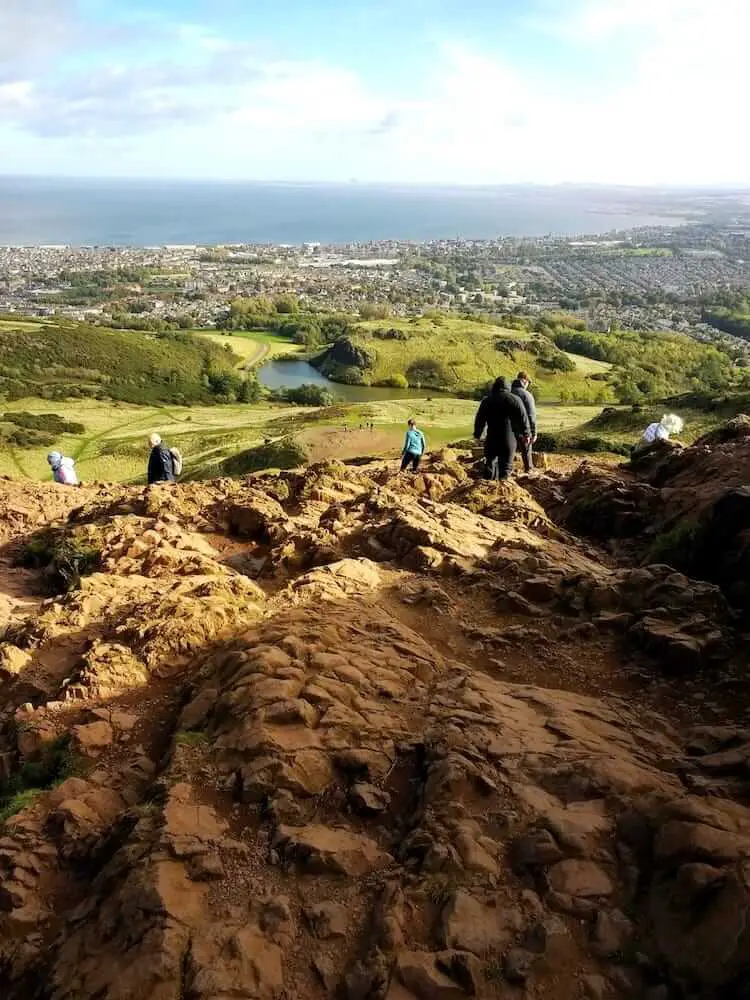
On the peak, you will – a few steps away from the summit marker – find an orientation table that tells you in which direction to look for the main sites in town and country.

This table is very useful, not least because it can also serve as a support to hold on to on a windy day. Of which there must be many on top of Arthur’s Seat.
On the day we visited, it had been a blustery morning downtown, but up here, we felt like standing in the whirls of a hurricane. In some spots, it was impossible to take a picture by oneself: teamwork was required, with one Easy Hiker holding the camera while the other was steadying the photographer’s hands and upper body.
Like this, we managed to take a panoramic zoom shot that also shows what may very well be Scotland’s most famous structure, the Forth Bridge, 25 km to the west, a pioneering work of steel construction (a UNESCO World Heritage Site) and, at the time when it was completed (in 1890), the bridge with the longest span in the world. (You can spot it just in front of the 21st century Queensferry Crossing.)

For our way down from the peak, we chose a different route, continuing in an eastward direction rather than returning the way we had come. This is the far easier hike but also far less fun. The route cuts across a large meadow with a consistent and gentle incline, encouraging you to ignore the beaten footpaths and to walk straight, cross-country, towards the body of water called Dunsapie Loch …

… and since this may very well be the only Scottish Loch (Gaelic for lake) that you will be able to see on a short trip to Edinburgh – all the famous Lochs are far away in the Scottish Highlands – you should take a closer look. (Even though this particular Loch comes without a resident monster.)

Turn left at the lake and continue on Queen’s Drive (the wide footpath) to cross the eastern section of Holyrood Park. Take the first exit on your right into Lyhill Terrace up to the busy main road.
A few steps on your right, you will find a bus stop (called Meadowbank House) from where you can take a short ride to the town centre. (Most buses from here go to Princes Street.)
Next week, we will take you for a much gentler stroll down the Waters of Leith – and will introduce you to the most photogenic quarter of Edinburgh.
Do we have a date?



